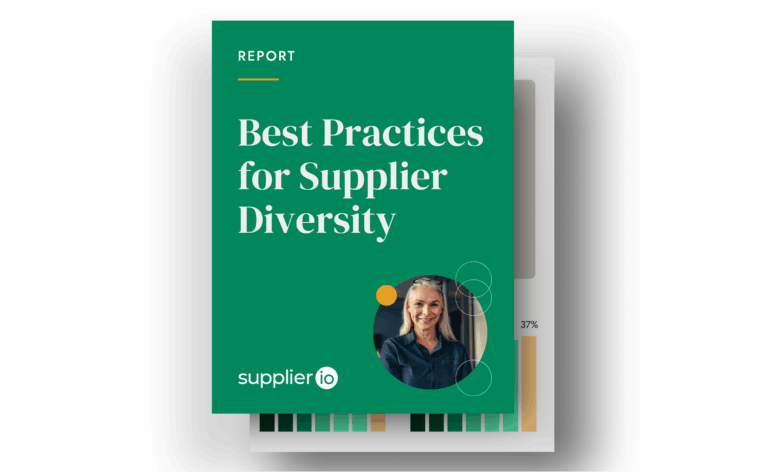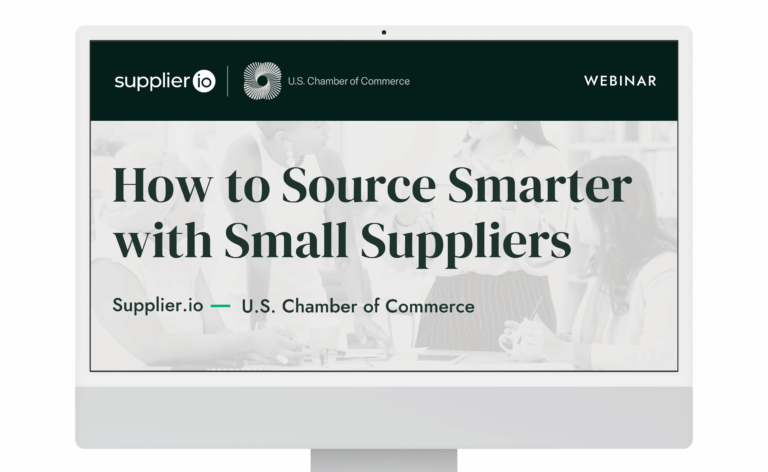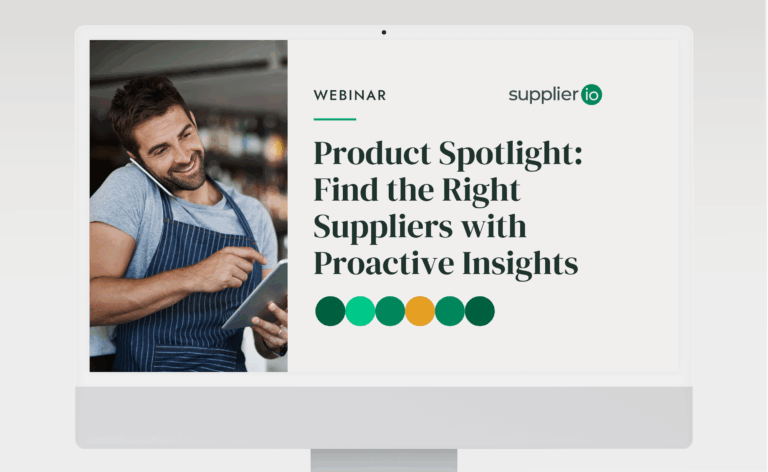Expanding Supplier Diversity with a Tier 2 Program: Insights from Industry Leaders
In a recent Supplier.io Tier 2 webinar, experts shared valuable insights on building and optimizing Tier 2 supplier diversity programs.

In a recent Supplier.io Tier 2 webinar, Angenetta Frison, Associate Director of Supplier Diversity from UnitedHealth Group and Adam Price, Supplier Diversity Manager from BNSF Railway shared valuable insights on building and optimizing Tier 2 supplier diversity programs.
As forward-thinking supplier diversity leaders, Frison and Price are transforming their organizations’ approaches with strategic initiatives focused on measurable impact and scalability. Adding technical expertise, Lindsay Peltin from Supplier.io’s Tier 2 Managed Services Team contributed insights on tools and best practices to support effective Tier 2 program management.
Expanding supplier diversity beyond Tier 1
For both UnitedHealth Group and BNSF Railway, strengthening a Tier 2 program is a logical progression from their well-established Tier 1 supplier diversity efforts. Angenetta Frison explained how UnitedHealth Group’s Tier 2 strategy allows the organization to engage diverse suppliers in categories where Tier 1 options are limited, enhancing diversity across various business units. This approach enables UnitedHealth to “connect across business units that otherwise would have limited exposure to diverse suppliers,” fostering an inclusive sourcing network that amplifies their diversity goals.
Similarly, Adam Price described BNSF Railway’s Tier 2 program as an extension of their commitment to a supply chain that reflects the communities they serve. BNSF’s sourcing team is encouraged to incorporate diverse suppliers whenever possible.
“Our objective is not only to expand Tier 1 spend but also to grow relationships with Tier 2 suppliers who bring valuable flexibility and local alignment to our operations,” said Price. This focus has enabled BNSF to create an agile, inclusive supply chain that addresses the specific needs of various locations across the western United States.
Setting goals and building accountability
Clear, attainable goals are essential for Tier 2 program success. Frison shared that UnitedHealth Group tracks both spend growth and the number of participating suppliers as key performance indicators, ensuring both the reach and impact of their Tier 2 program are actively measured. She also recommended incorporating Tier 2 metrics into supplier scorecards, which motivates suppliers by linking their performance to company-wide diversity objectives.
BNSF Railway has adopted a similar approach but with a flexible goal structure. Rather than imposing strict spend targets, Price explained that BNSF focuses on year-over-year growth. This approach accommodates fluctuations across business units and ensures that sourcing teams prioritize diverse supplier engagement organically. “Our objective is to increase spend without creating arbitrary goals that may not reflect actual business needs,” Price added, underscoring the importance of realistic, growth-focused objectives.
Navigating data and supplier engagement complexities
A critical takeaway from the webinar was the shared challenge of maintaining data consistency. Both Frison and Price emphasized that accurate data is essential for tracking Tier 2 contributions effectively.
Frison noted that “data, data, data” is central to ensuring transparent and robust reporting. To address inconsistencies, UnitedHealth collaborates closely with Supplier.io’s Tier 2 Managed Services Team for compliance tracking and streamlined data collection. This partnership has been instrumental in helping UnitedHealth Group achieve and maintain a consistent 85% compliance rate in supplier reporting.
As Frison explained: “I’m grateful that I have (Supplier.io) managed services. So that’s been a blessing for me because we’ve been able to get our utilization up over the last 1.5 years from 60%. And we’re maintaining about 85% compliance. So all of our suppliers are consistently reporting every quarter.”
Price highlighted an additional complexity from varying reporting standards across suppliers. “Our team spends considerable time understanding each supplier’s unique processes to streamline reporting wherever possible,” he explained. To tackle this, BNSF has introduced specific contract clauses that set standardized reporting expectations, helping to align the network and improve timelines.
Supplier engagement is an area where proactive communication makes a difference. Frequent turnover within supplier organizations can delay reporting, often requiring sourcing teams to “chase down the right person,” as Price described. Both Frison and Price recommend engaging suppliers at trade shows and networking events, where face-to-face interactions reinforce reporting expectations and educate suppliers on the broader value of their participation in Tier 2 programs.
Adding a technical perspective, Lindsay Peltin, a Supplier.io Tier 2 expert, explained how Supplier.io’s Tier 2 reporting platform centralizes data collection, enabling suppliers to report Tier 2 spending more efficiently.
The platform validates diversity certifications and manages data discrepancies, giving clients real-time insights into their program’s performance. Many clients with Managed Services initially have compliance rates of 50-70%, but after two years of using Supplier.io’s tools and services, they often exceed 80% compliance.
Proven strategies for Tier 2 program success
Frison and Price offered practical advice for organizations at any stage of their Tier 2 journey. Frison emphasized the importance of vetting potential suppliers to ensure they are prepared to meet reporting requirements and contribute meaningfully. UnitedHealth invites only suppliers with the resources and commitment to track Tier 2 spend, which helps maintain program quality and meet diversity goals.
For Price, executive support is a key factor. Regular updates with BNSF’s Chief Procurement Officer keep supplier diversity priorities front and center, driving accountability across departments. Price also highlighted the value of industry events for supplier engagement, noting, “Networking events are excellent opportunities to get our prime suppliers on board and reinforce reporting importance.”
Expanding value through economic impact analysis
Frison shared how economic impact reporting offers a comprehensive view of UnitedHealth’s spend with diverse suppliers, beyond dollar amounts. Using Supplier.io’s economic impact analysis, UnitedHealth measures contributions such as job creation and wage support in underserved communities.
This broader perspective allows them to demonstrate the ROI of their supplier diversity program in ways that resonate with stakeholders, showing how their efforts support community development. “It’s not just about growing the spend,” Frison explained, “but about the broader economic value we bring to communities in need.”
Building a culture of inclusive sourcing
Through clear goals, proactive supplier engagement, and consistent data practices, UnitedHealth and BNSF are setting new standards in Tier 2 program management. With the added support of Supplier.io’s Tier 2 platform and managed services, these organizations have developed scalable, impactful Tier 2 supplier diversity initiatives that deliver measurable business value.
For companies looking to expand their supplier diversity efforts to include Tier 2 suppliers, the webinar highlighted the importance of strong data practices, achievable targets, executive buy-in, and community-focused outcomes. Together, these elements create a resilient, inclusive supply chain that benefits both businesses and communities.
Interested in expanding your own supplier diversity efforts? Reach out to Supplier.io for expert guidance on building a Tier 2 program.




